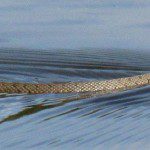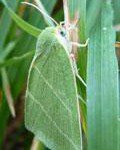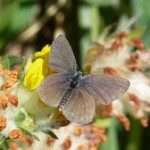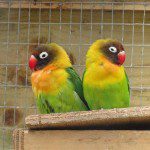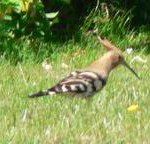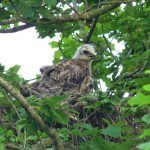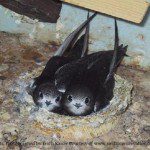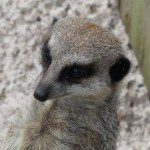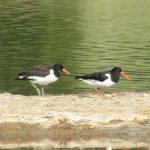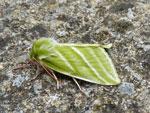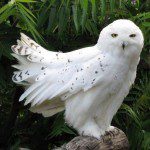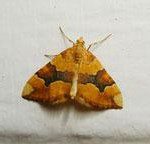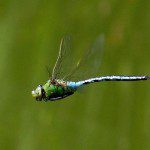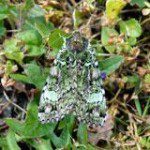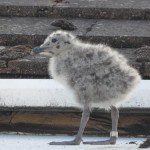[Reprinted with permission, apologies for the delay!]
Axe Estuary Birds No 138 15th August 2010
The Birds
Much better this period, as to be expected, with a notable rarity and several migrants dropping in and passing over the patch.
The rarity, although of dubious origin, was a female Red-crested Pochard first seen on 11th, and present until at least the 13th on the Estuary. This record follows on from a pair present for a few hours on Black Hole Marsh and the Estuary last May. I will wrap the ducks up now, with a drake Tufted Duck making the Borrow Pit his home for the last week or so, a few Teal are now starting to appear now, and our first Wigeon I’m sure are only a matter of days away.
At least one Osprey is to be expected during this period, and one that flew south then west away from Seaton on 11th was it, although its visit couldn’t have been briefer! I hope we get a lingering juvenile later in the year.
Also on cue was our first Wood Sandpiper of the autumn, with one seen mostly around the Black Hole/Stafford Marsh area from 10th. Green Sandpiper numbers remain rather low, with no more than six seen on any one day – they should be present in double figures by now. Dunlin numbers peaked at 30, with up to 20 Ringed Plovers seen on Black Hole Marsh. A couple of single Little Ringed Plovers have also been noted feeding around the edge of the marsh. A couple of Greenshank have been noted and Black-tailed Godwit numbers peaked at six with up to three Whimbrel noted. The first four Snipe were seen on 14th.
On the Estuary, gulls have included a total of three juvenile Yellow-legged Gulls. Sporadically a Water Rail can be glimpsed feeding along the banks of the upper river or along the back edge of Black Hole Marsh.
A few migrant passerines are being seen now, with Beer Head producing a Garden Warbler, a Lesser Whitethroat, five Whitethroat and ten Wheatear on 11th. The following day two female Redstarts and three Spotted Flycatchers were in the fields behind Beer Cemetery.
An interesting sighting was of a Barn Owl roosting in a hedge beside the Axe just south of Boshill Cross, this could mean its usual roosting box is currently over crowded by owlets.
No moth photos this time, as conditions have been far from ideal for trapping of late. So instead a few photos showing the antics of the 9th when a few more Water Voles were released in the area to bolster the relatively recently introduced population. While on the subject of mammals, the following day, the first Otter seen for a good couple of months was spotted at Colyford Marsh.
Photos: Red-crested Pochard, Tufted Duck, Wood Sandpiper and Water Voles – Steve Waite.
The Trivia
I am pleased to tell you that the 2009 Report is now available, after many set backs and production difficulties. It is available from the TIC in Seaton and Archway Books in Axminster at £4.50 or by post from EDDC Countryside Service, Knowle, Sidmouth, Devon, EX10 8HL. Phone 01395 516511, price £4.50 plus £1.00 P& P.
James Chubb saw something unusual last week – a Grey Squirrel rushing across the field towards the salt marsh between Black Hole Marsh and Seaton Marshes. As James said “There are no trees there – must have been nuts1”
We saw an unusual Blackbird in our garden in Colyford. An adult male with a grey head, and a rusty orange patch on it’s chest, where a Ring Ouzel is white. There were also grey patches on it’s wings. It was collecting beak-fulls of food, so presumably feeding young. There is another grey-headed one, without the patch on the chest.
Richard Staniforth, of Winnipeg, Manitoba, writes “I emigrated to Canada in 1966. In the sixties I would cycle from Honiton to Seaton which was quite a task because of the ridge of hills that blocked every direction! I would leave my bike over the hedge adjacent to the A3052 bridge and walk down the east side of the marsh to Seaton and back the same way. It was quite a job to get around some of the dense hedges and saltwater channels that criss-crossed the meadows but it was well worth it! There were occasional wooden bridges over those salt water channels but they were always wet and very slippery. I never would see other birders in the early sixties which was disappointing for me, especially when I now learn that there were in fact quite a few fellow enthusiasts!
I had some good birds, especially during the cold winter of 1962-3. Unfortunately, my notes were left behind when I emigrated but I should contact my sister who lives in Dalwood as she may have them. In Manitoba, we are just now commencing work on our first Breeding Bird Atlas. This year is the first of five for recording information. It is a challenge because of our low population, and lack of roads in the northern half of the province but very enjoyable nevertheless, particularly as we also have a group of excellent birders here.”
(By coincidence, I met another birder in Colyford hide who 20 years ago also used to walk down that side of the river.)
News from Holyford Woods
Along the Hangings there are enough ripe blackberries to add to apples for a pie! I have had two brief views of the Roe buck deep in the woods, and he is now sporting his lovely rich red summer coat, so he should catch a doe’s eye as the rut starts about now. Bird calls heard regularly are dominated by the plaintive cries of the two juvenile Buzzards and their parents. Heard virtually every time all through the year are the calls of Nuthatches and Greater Spotted Woodpeckers (drumming as well), and from the fields north of the woods those of the Green Woodpecker. I disturbed three when walking there last week. By the entrance gate there were three baby Toads in the grass, and froglets are still to be seen near the Top Pool. Butterfly numbers have dropped, and the only interesting one was a Holly Blue one day.
Reserves
There will be further work done on the reserves in the next few weeks – the path at Colyford Common will be extended to the viewing platform, and a ramp built. Work will begin on the hide at Black Hole Marsh, and improvement to the paths there, and the path at Seaton Marshes will be re-surfaced. All good stuff!
Diary Dates
Tuesday 17th August 9am – 11am Reptile Ramble at Fire Beacon Hill for Junior Rangers.
Friday 20th August 5pm – 7pm Bird Watching Tram Trip with Donald Campbell.
Saturday 21st August 5pm – 7pm Bird Watching Tram Trip with Ian Waite.
Wednesday 18th August 4pm – 6pm Musbury, evening walk for water plants and birds with Mike Lock.
Meet Waterford Farm SY 265947. Wear Wellies.
Friday 20th – Sunday 22nd August. Wet and Wild Weekend – Events throughout the weekend. See attached poster.
Thursday 2nd September 10am – Noon Meet the Birds, Colyford Common hide. Everyone welcome.
Every Tuesday, Thursday and Saturday from 10.00 a.m. to 4.00 p.m. Biodiversity Exhibition at the old TIC in Seaton’s Underfleet Carpark, with various informal walks and talks – more details at the Exhibition or phone 01395 517557.
This twice-monthly email newsletter is freely available to anyone who would like it, as is a periodic one about the activities of the East Devon Local Group of the Devon Wildlife Trust. Just send me an email with Axe Estuary Birds and/or East Devon DWT in the subject line. Also, for those without a computer, I will send a copy by post if you would like to send me some stamps.
Thanks to those who keep we informed – please continue to tell us of any unusual, interesting or amusing sightings, and what is about locally, and send any photos you would like to share.
Steve, Jean and David.
davidwalters@eclipse.co.uk. tel. 01297 552616 Mobile 0779 1541 744.
7 Springfields, Colyford, Colyton, EX24 6RE
Mute Swan. Photo Sue Smith

















